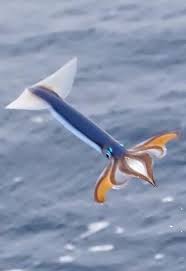Ryugu is a near-Earth object and a potentially hazardous asteroid of the Apollo group. It measures approximately 900 metres (3,000 ft) in diameter and is a dark object of the rare spectral type Cb, with qualities of both a C-type asteroid and a B-type asteroid.
In June 2018, the Japanese spacecraft Hayabusa2 arrived at the asteroid. After making measurements and taking samples, Hayabusa2 left Ryugu for Earth in November 2019 and returned the sample capsule to Earth on 5 December 2020.
The samples showed the presence of organic compounds, such as uracil (one of the four components in RNA) and vitamin B3.
I worked on that mission (the MASCOT lander :) - if only in a tiny ground role…
Hey, ALL jobs are important in one way or another. You should be happy your contribution - no matter how small - eventually culminated in this picture being taken 🤘
That’s supercool! Do you have some intresting fact/anecdote to share?
My colleagues took a (very) basic Japanese course to show some politeness towards the JAXA team :)
Ahaha thanks for the share!
I’d live there
What blows my mind about photos of other bodies in the solar system like Ryugu or even Mars isn’t just the technology or the alien-ness… it’s the fact that there isn’t one microbe worth of life in that photo. That’s basically impossible on Earth. There is life in the deepest trenches and in the stratosphere. In freezing Antarctica and at the rim of volcanoes. Even under volcanoes.
But that photo of Ryugu? Not so much as a phage or virus, let alone a living thing.
And that’s most of the universe.
As far as we know, anyway, and we know very little. I don’t think we can say that most of the universe is lifeless with any confidence at this point.
Yeah, our inability to find proof of life outside our planet has more to say about our technology than it has to say about whether there is other life out there. It would be quite the leap to confuse our inability to find it with it not being there.
I completely agree with you
You just blew my mind, thank you!
But that photo of Ryugu? Not so much as a phage or virus, let alone a living thing.
I wouldn’t be so sure about that. There’s organisms that can survive in space for a very long time, and the probe & lander probably brought some there. Desinfecting space crafts never kills 100% of the microbial life. Also, Ryugu is an asteroid, not a comet - typically formed by collisions of larger bodies. And where there is rock, there was once heat - and if there was water, too, microbes MAY have formed. It’s unlikely that any organism hibernates for millions of years, but not impossible: https://nerdist.com/article/830-million-year-old-microorganisms-could-still-be-alive/
And that’s most of the universe.
On this, you are very likely wrong. Unless you count stars & empty space. Chances are that most planets with geological activity have the potential for primitive life forms, and hopefully, the jupiter icy moons explorer and followup missions will give us an idea about extraterrestrial life even within our own solar system.
Unless you count stars & empty space
I very much do.
This image will be used in an air duct cleaning scam in 3…2…1…
Sad but true but also deserved if they fall for that.
what if vitamin b3 is really just asteroid material 🤔 and we have part asteroid in us, instead of them having part of us 😌
We’re made of supernova material. I think that’s cooler anyway.
Wow this could actually make actual sense
Looks crunchy
So if a human was standing on the surface in the photo, could you see them? How large would they be against the background rock?

Pics like this I find mildly disturbing. With all of the crazy shit that we witness on earth from day-to-day, it’s still home and where I keep all my stuff. The energy, warmth, and exuberance of life are all elements that are impossibly rare in existence as we know it, and seeing an image that reinforces that it’s not the norm. *shudder
Wait wdym we found organic matter outside of the Earth
“Organic” in this case just means it contains carbon atoms. That’s the difference between organic and inorganic chemistry IIRC.











